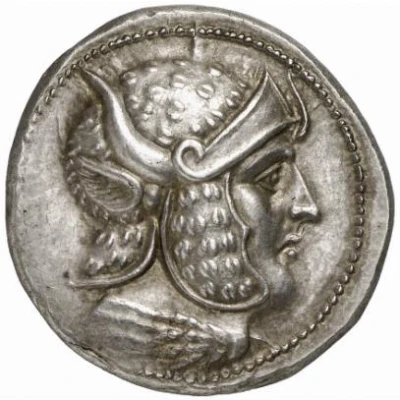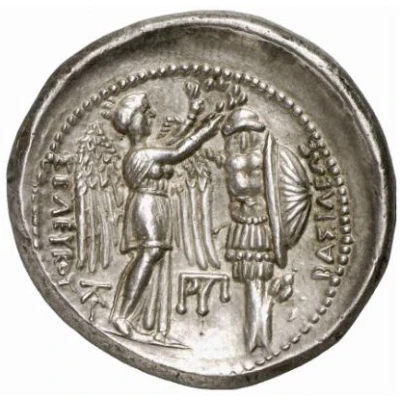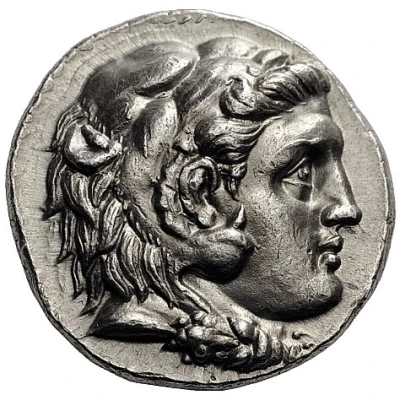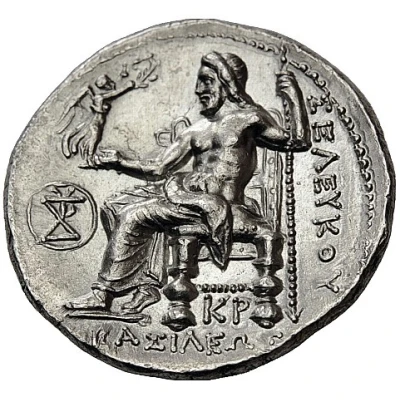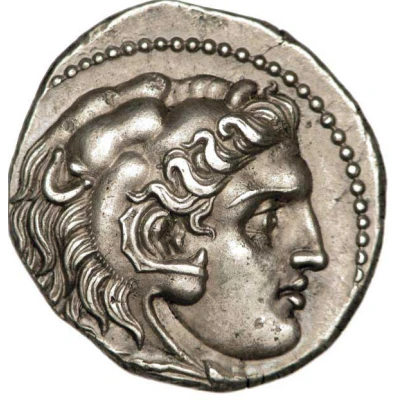
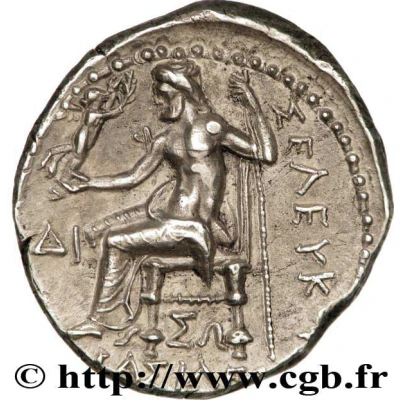

© CGB
Tetradrachm - Seleukos I Nikator 300 BC - 281 BC
| Silver | 16.80 g | 27 mm |
| Issuer | Seleucid Empire (Seleucid Empire (305 BC - 64 BC)) |
|---|---|
| King | Seleukos I Nikator (305 BC - 281 BC) |
| Type | Standard circulation coin |
| Years | 300 BC - 281 BC |
| Value | Tetradrachm (4) |
| Currency | Drachm |
| Composition | Silver |
| Weight | 16.80 g |
| Diameter | 27 mm |
| Shape | Round (irregular) |
| Technique | Hammered |
| Demonetized | Yes |
| Updated | 2024-10-10 |
| Numista | N#49460 |
|---|---|
| Rarity index | 94% |
Reverse
Zeus, nude to waist, seated left and holding Nike, with legend below and to the right, and with letters to the left and beneath the seat.
Script: Greek
Lettering:
ΒΑΣΙΛΕΩΣ ΣΕΛΕΥΚΟΥ
ΔΙ
Ση
Translation: King Seleukos
Edge
Rough
Comment
Many different combinations exist for the letters to the left of Zeus and under his seat.Interesting fact
One interesting fact about the Tetradrachm - Seleukos I Nikator coin is that it features the image of a mythical creature called the "Seleucid Eagle" on its reverse side. This eagle was a symbol of the Seleucid Empire and was used on many of its coins. The eagle is depicted with a crown on its head and wings spread wide, signifying the empire's power and influence. The use of this symbol on the coinage of the Seleucid Empire helped to promote a sense of unity and identity among its citizens.
